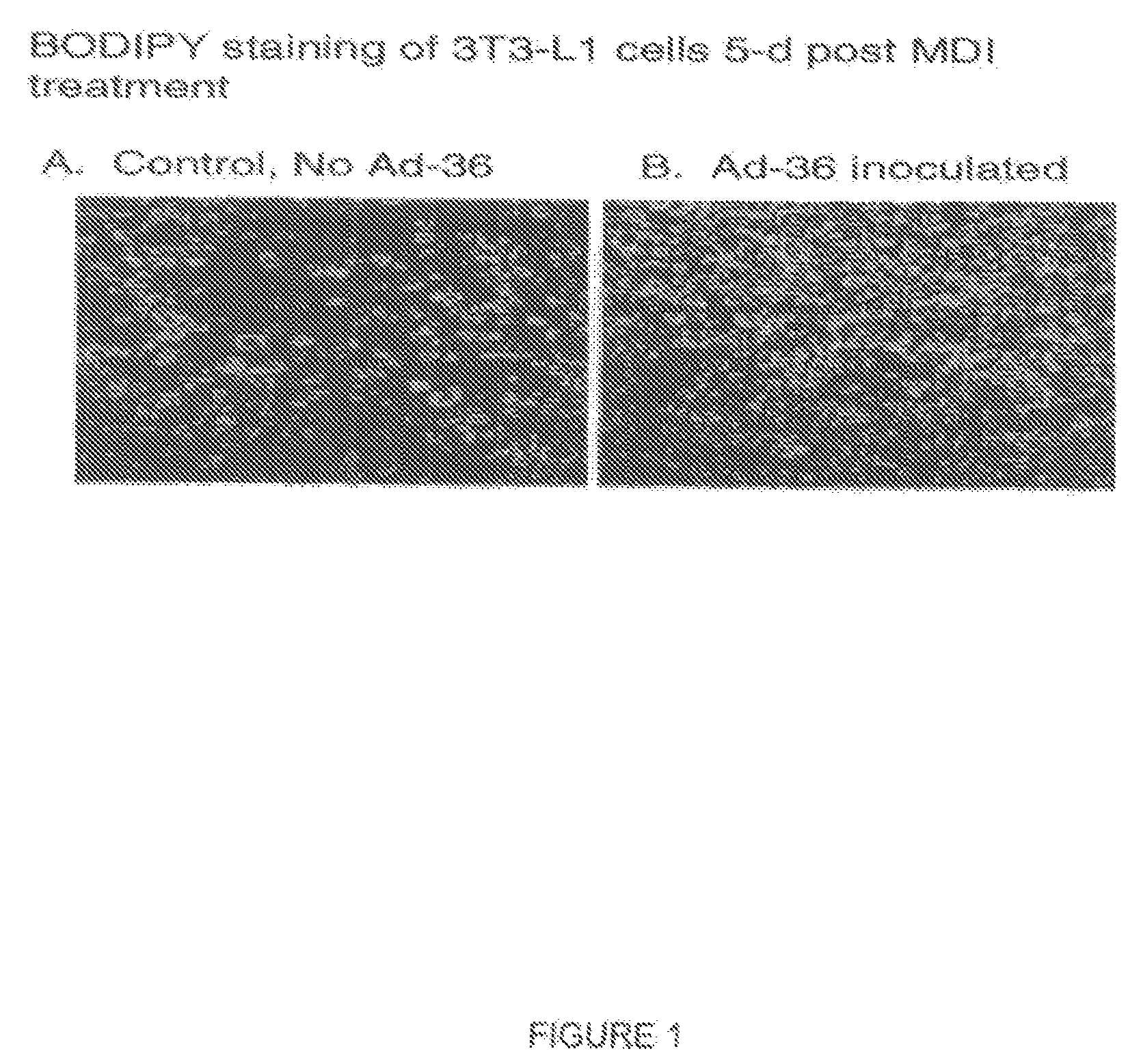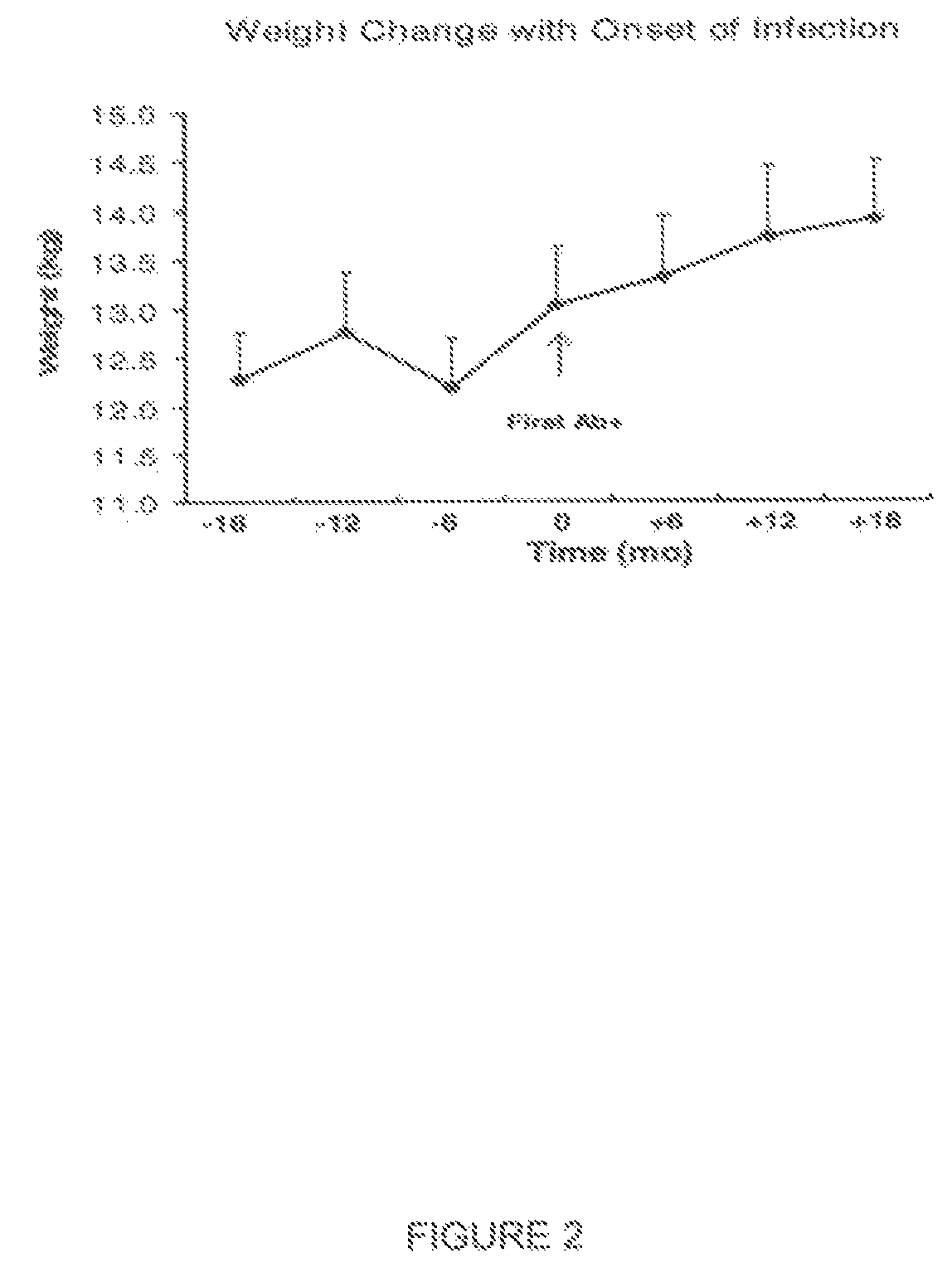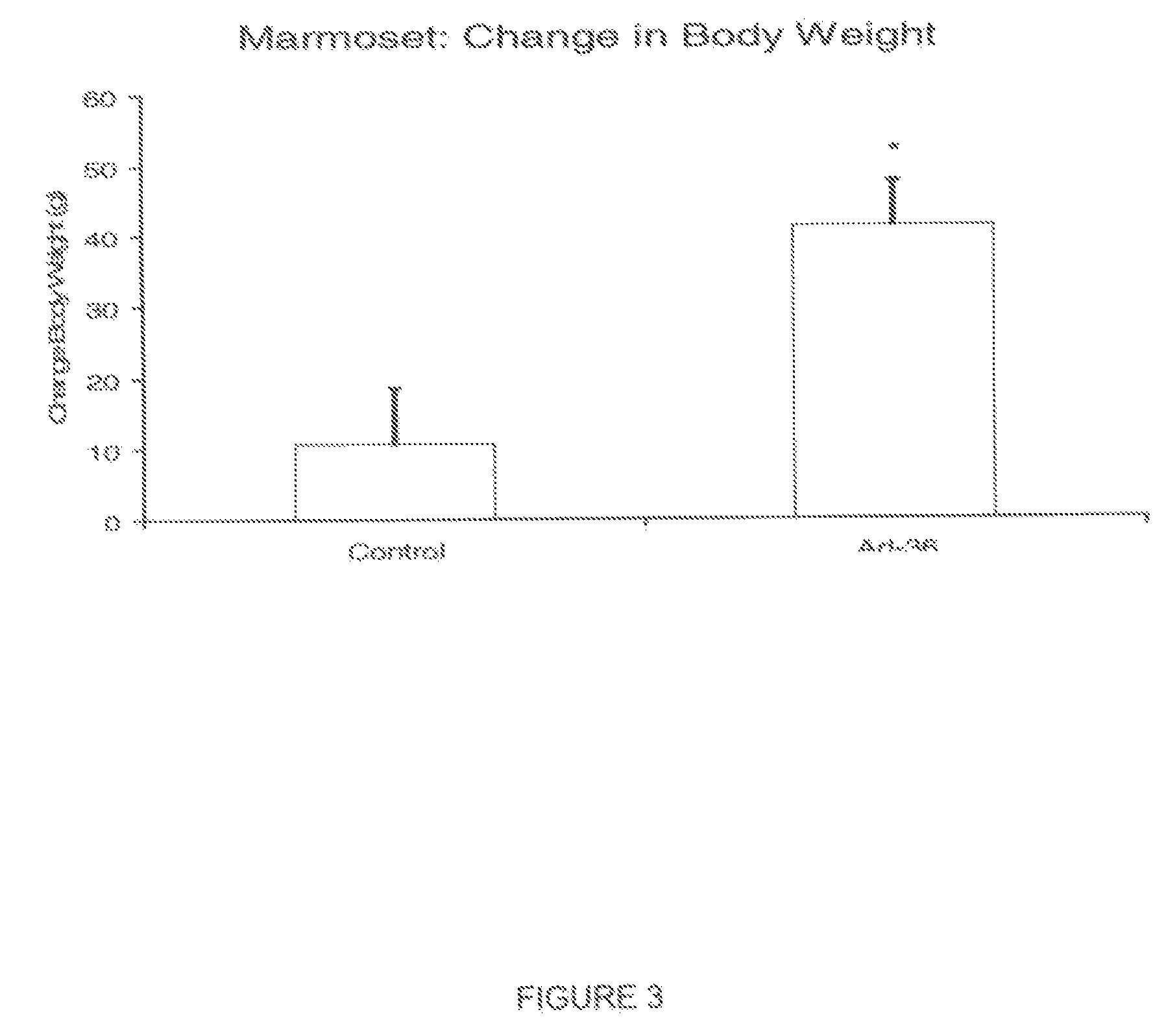Adipogenic adenoviruses as a biomarker for disease
a technology of adenovirus and adipogenic adenovirus, which is applied in the field of relation between infection and adipogenic adenovirus, can solve the problems of inability to explain cancers such as colon, renal, or pancreatic cancer, and inability to detect adenoviruses, and achieves no evidence that adenoviruses cause human cancer
- Summary
- Abstract
- Description
- Claims
- Application Information
AI Technical Summary
Problems solved by technology
Method used
Image
Examples
specific example 1
[0126]Blood samples from 502 humans in separate populations from three cities: Madison, Wis., Naples, Fla., and New York City, N.Y., were measured for Ad-36 infection. The definition of obesity was a BMI greater than about 30 kg / m2 and the population was divided into obese and non-obese subjects. The prevalence of Ad-36 antibodies in serum obese subjects was about 30% and in non-obese was about 11% (i.e., a 3:1 ratio) (FIG. 13).
[0127]When the subjects were divided into antibody positive versus antibody negative, the antibody positive were observed to be about 9 BMI units heavier (i.e., greater than about 50 pounds)(p<0.001) (FIG. 14).
[0128]Moreover, serum cholesterol and triglycerides were lower in antibody positive humans (less than about −35 mg / dl, p<0.001), exactly the same reductions observed in prospectively infected monkeys. There were no correlations of antibodies to Ad-2 or Ad-31 with either body composition or serum cholesterol and triglycerides in humans, implying that the...
specific example 2
[0131]Very strong evidence of an association of Ad-36 with cancer comes from studies at the University of Wisconsin. Banked serum from 128 subjects with breast cancer and 37 subjects with prostate cancer was obtained, and assayed for Ad-36 antibodies using a serum neutralization assay. It was observed that 51% of the patients with prostate cancer and 50% of the breast cancer patients were positive for Ad-36 antibodies. However, since the samples were anonymous, no data on obesity, type or stage of cancer, or presence of metastases. From data on Ad-36 antibodies in obese and non-obese individuals it was estimated that about 14% of the general population had Ad-36 antibodies. Thus, there is an almost four fold increase in the prevalence of Ad-36 antibodies in both breast and prostate cancer patients.
specific example 3
[0132]Prostate cancer tissue from 18 patients was obtained and assayed for Ad-36 DNA by nested polymerase chain reaction assay (PCR) using primers made to unique DNA sequences in the Ad-36 fiber protein genome. Eleven of the 18, or 61%, had Ad-36 DNA in the cancer tissue. FIG. 16 shows a PCR gel demonstrating the presence of Ad-36 DNA in prostate cancer tissues. As noted above, Ad-36 DNA in multiple tissues of experimental animals was found, particularly in adipose tissue using nested PCR with primers made from unique DNA sequences in the Ad-36 fiber protein genome. FIG. 17 shows a PCR gel from DNA extracted from adipose tissue of monkeys infected with Ad-36. All three of the infected monkeys, but none of the controls, have viral DNA present.
PUM
| Property | Measurement | Unit |
|---|---|---|
| size | aaaaa | aaaaa |
| size | aaaaa | aaaaa |
| size | aaaaa | aaaaa |
Abstract
Description
Claims
Application Information
 Login to View More
Login to View More - R&D
- Intellectual Property
- Life Sciences
- Materials
- Tech Scout
- Unparalleled Data Quality
- Higher Quality Content
- 60% Fewer Hallucinations
Browse by: Latest US Patents, China's latest patents, Technical Efficacy Thesaurus, Application Domain, Technology Topic, Popular Technical Reports.
© 2025 PatSnap. All rights reserved.Legal|Privacy policy|Modern Slavery Act Transparency Statement|Sitemap|About US| Contact US: help@patsnap.com



